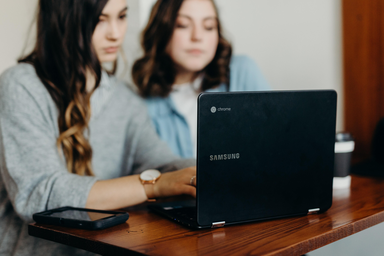The awkward middle school phase for many was a time in life when you had no idea how to dress yourself, do makeup properly, and almost always back of your hair was left unstraightened. When you’re a 13 year-old girl, all you want to do is have fun and look cute. Looking cute often meant Hollister or Aeropostale sweatpants and a Victoria Secret sweatshirt. Looking back, I can see how even my generation fell victim to over sexualizing its youth. However, without the mainstream flow of Instagram content and “influencers”, life for me in middle school was pretty simple. I grew up seeing fashion in youth through the lense of Disney channel stars like Miley Cyrus and Ashley Tisdale. There was a point in my life where I thought a skirt over jeans was fashionable. Nowadays, Brandy Melville Crop tops and dresses that mimic Reformation cocktail attire is what I’m bombarded with when I think of young girls.
I used to think it was sexist to critique the ever-changing beauty standards that get imposed on our youth, as who am I to say what should and shouldn’t be worn? However, the more I learned about why these beauty standards change, the more disgusted I felt. Sexualizing children isn’t new, and sexualizing young women is certainly common practice for our society. Growing up, I never had access to expensive makeup, nor did I know how to really properly apply it. The expectations of how my makeup should look were relatively low and I can’t imagine growing up in an age where the beauty expectation is to have melted contour and don Kylie Jenner-esque lips on your Instagram. Rather than a judgement, this is an empathetic analysis on how these young girls are being held to an impossibly adult standard. From the shows they watch, to the media they scroll past, the beauty standard for women everywhere is even more cut-throat and mature than ever before.
Although it’s natural for beauty standards to change and evolve, we must ask ourselves what the beauty standards are reflecting exactly. Opening up TikTok is an easy way to see how drastically different social media looks like for early teens now. Viral trends and dances are featuring a lot more hip rolling and back arching than they did when I was growing up. Long gone are the days of cinnamon challenges and having someone press on your chest until you pass out (so dangerous, why did we do this?). The dangers of these trends lay in the fact they are trickling down into big demographics of minors, and inadvertently pedophiles. TikTok’s large child audience has brought about security and privacy concerns from not only parents but lawmakers.
On one hand, it’s normal for teenagers to want to hop on to what’s trendy and relevant, but on the other hand, the content they’re consuming is becoming more and more mature. Celebrities also look very different nowadays, and the fashion and beauty trends are synonymous with what popular female celebrities are wearing. It’s easy to see the correlation between what young girls are into now and what’s on trend with 20 something year old singers and actresses of their time. The concern I have is feeling like we’re not doing enough to protect young girls from feeling like they HAVE to look like the celebrities they idolize. This is why I like younger creators like Olivia Rodrigo, she’s down to earth just living her life not in an overtly sexual way. She’s freshly 18 and I can appreciate how simple and carefree her feed is. I think this is a more realistic expectation of how kids should be, and I kinda love that they brought HSM back for the youth! This is what growing up is all about! Hanging out and indulging in teen drama tv shows!
I don’t really want to see 14 year olds wearing lash extensions and cowgirl hats on the timeline. And I do think younger girls hopping on these very adult trends are unintentionally falling under this pedophilic lens of wanting minors to look and act more like women. While I support healthy growth and maturity in young girls, I can’t sit here and act like we are fully protecting them from the male gaze, and I do mean grown-adult-male gaze. We need to do more for our youth, we need to create more content for them, more products, and more clothing that reflects their age (I think we’ve ALL grown out of Forever 21). Middle schoolers paying $35 for a Princess Polly top is almost more of a rip-off because they don’t even have steady income. We need to address the disparity in why we aren’t supporting this demographic both culturally and industrially.
To conclude, I just hope these young girls know that they can be young. They don’t have to look “attractive” or know how to do makeup or have a perfect body. We shouldn’t expect that of children and we shouldn’t turn a blind eye to what’s going on with Gen Z and the expectations we are placing on them.



